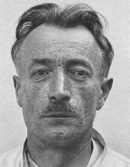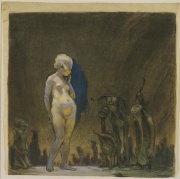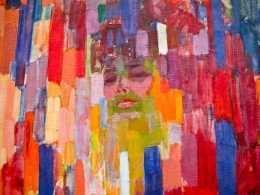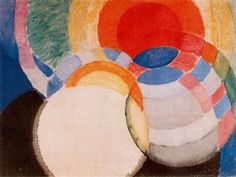František Kupka: Difference between revisions
| (2 intermediate revisions by one other user not shown) | |||
| Line 7: | Line 7: | ||
== Personal life == | == Personal life == | ||
'''UNDER CONSTRUCTION'''<br> | |||
František Kupka was born on September 23, 1871, in Opocno in eastern Bohemia (now the Czech Republic). From 1889 to 1892 he studied at the Prague Art Academy, then in 1892, he moved on the Vienna to study at the Akademie der Bildenden Künste. | František Kupka was born on September 23, 1871, in Opocno in eastern Bohemia (now the Czech Republic). From 1889 to 1892 he studied at the Prague Art Academy, then in 1892, he moved on the Vienna to study at the Akademie der Bildenden Künste. | ||
== Artistic career == | == Artistic career == | ||
'''UNDER CONSTRUCTION'''<br> | |||
During his training, Kupka initially painted historical and patriotic themes; and then began to explore subjects that were symbolic or allegorical. His first exhibition was at the Kunstverein in Vienna in 1894. | |||
== Theosophical influences == | == Theosophical influences == | ||
| Line 37: | Line 39: | ||
[[Category:Famous people|Kupka, František]] | [[Category:Famous people|Kupka, František]] | ||
[[Category:Nationality Czech|Kupka, František]] | [[Category:Nationality Czech|Kupka, František]] | ||
[[Category:People|Kupka, František]] | |||
Latest revision as of 20:12, 27 June 2023
UNDER CONSTRUCTION
UNDER CONSTRUCTION
František Kupka was a Czech painter and illustrator who was involved with Theosophy and Eastern philosophy. With Wassily Kandinsky, Piet Mondrian, and others, he established a movement of non-representational abstract art.
Personal life
UNDER CONSTRUCTION
František Kupka was born on September 23, 1871, in Opocno in eastern Bohemia (now the Czech Republic). From 1889 to 1892 he studied at the Prague Art Academy, then in 1892, he moved on the Vienna to study at the Akademie der Bildenden Künste.
Artistic career
UNDER CONSTRUCTION
During his training, Kupka initially painted historical and patriotic themes; and then began to explore subjects that were symbolic or allegorical. His first exhibition was at the Kunstverein in Vienna in 1894.
Theosophical influences
The artistic circles in Europe of the 1890s and early twentieth century were filled with influences from Western esotericism and Eastern religions.
František Kupka started out as spiritualist medium, widening his interests as an adult into Theosophy, astrology, and Eastern religions. he did not become a Theosophist, nor did he embrace all the tenets of Theosophy, but was drawn to certain elements that resembled and expanded upon his personal mystical world view. His visions and mediumistic experiences resonated with Theosophical theories of astral vision and the astral world. his personal notes show that he was quite well read in the writings of Blavatsky, Besant, Leadbeater, and Steiner.[1]
Like Kandinsky, Kupka focused on color, proportions, and forms that could be biomorphic or geometric. His views were similar to the Belgian Symbolists like Jean Delville.
Working in Paris alongside the Cubists in the early 1910s, Kupka became interested in theories concerning vibration, radiation, and the emission of waves; scientific themes that were very popular in occult and Theosophical circles at the time. Coincidentally, he was also influenced by synaesthetic theories concerning the unity of music and color (the "color" of sound), current in the avant-garde and in certain Theosophical circles. Kupka combined these with the Theosophical idea that nature manifests itself rhythmically in geometric forms.
His Theosophical syncretic vision of science and the spiritual coincided with Steiner's vision of the unity of science, art and religions. It determined the subject matter of Kupka's art: the dynamic process of the universe.[2]
Associations between colors and musical notes were of great interest to Kupka and Kandinsky, and the color chards in the Besant-Leadbeater book Thought Forms were influential. Kupka explored relationships science, the spiritual, and music in works like the Disks of Newton or Study for 'Fugue in Two Colors', painted in 1912.
Additional resources
Notes
- ↑ Tessel M. Bauduin, "Abstract Art as 'By-Product of Astral Manifestation': The Influence of Theosophy on Modern Art in Europe" Handbook of the Theosophical Current (Leiden: Brill, 2013), 432.
- ↑ Tessel M. Bauduin, "Abstract Art as 'By-Product of Astral Manifestation': The Influence of Theosophy on Modern Art in Europe" Handbook of the Theosophical Current (Leiden: Brill, 2013), 437.



